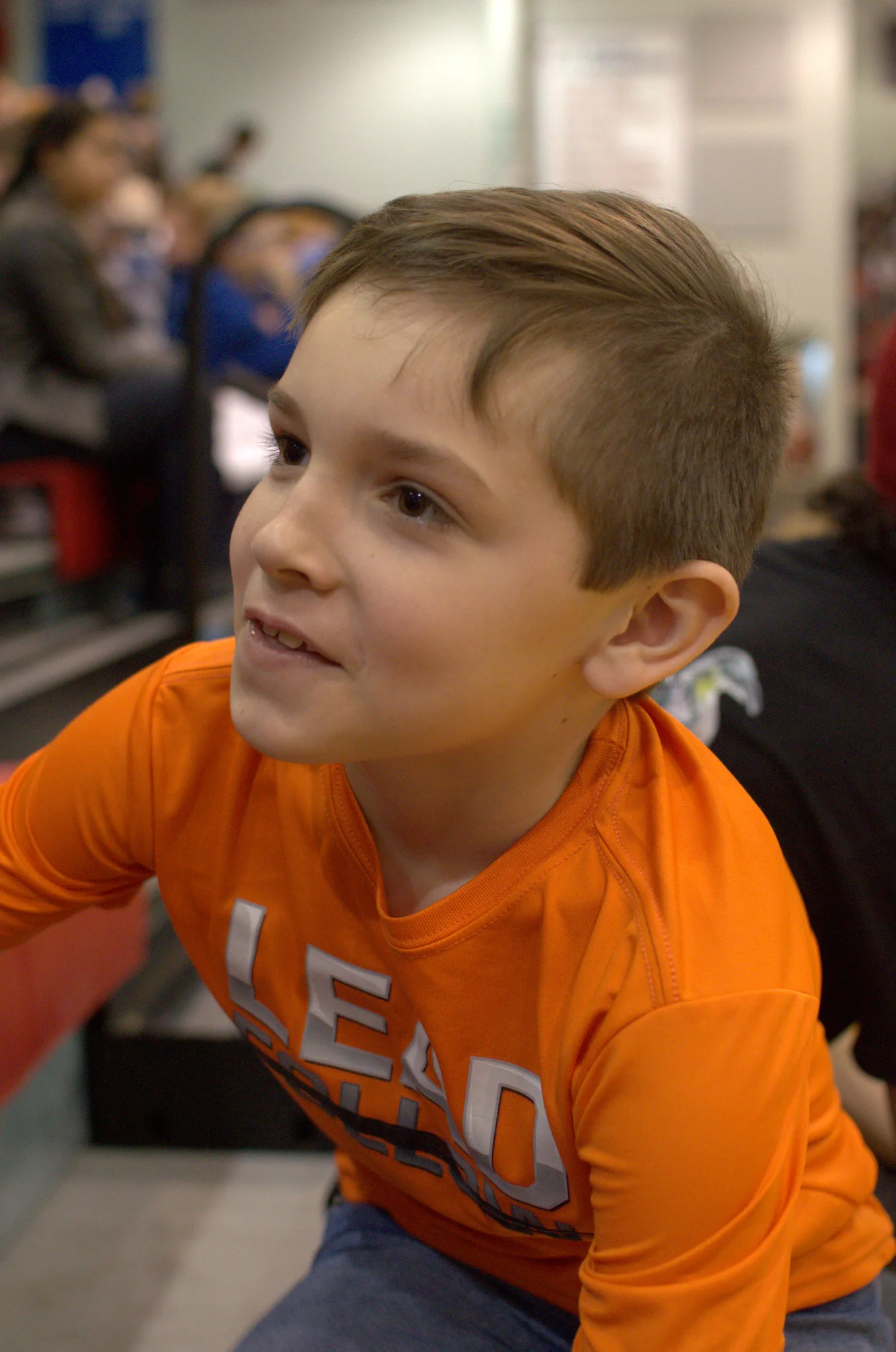Written by PC & Tara Campbell
“How do I get my administrators to buy in?”
We hear this question from both students and educators after almost every presentation that we deliver.
On one hand, this is saddening, because it means that all across the country, we have administrators in schools that are not providing an engaging, relevant school experience for their school communities. Students and educators alike often express that their administration “would never let us do things like you showed us from your school.”
On the other hand, it provides a reason for hope. Too often, administrators, and all of us for that matter, adhere to the status quo for a number of different reasons. Regardless of that, there is a prime opportunity to completely revolutionize how we do school culture and climate in buildings across the country.
In the meantime, however, it’s important to understand that school culture and climate do not have to be huge, game-changing projects that provide a complete facelift for your school. In fact, it’s quite the contrary. Here are 13 ideas that can impact your school’s culture and climate that you don’t have to pay for and, more importantly in this situation, you don’t even have to ask for permission!
1. A Smile and a Wave
Every time you pass someone on your school’s campus, you are constructing your school’s climate…whether you are building it up or tearing it down, however, is up to you. Be that person that smiles and waves and makes eye contact with everyone that you encounter, not just your friends or people that you like.
Our family spent the recent holiday season in New York City. One of the things that we observed during our time there was that regardless of race, ethnicity, religion, language, etc., smiles are not only universally understood, they are universally reciprocated. We all need to smile more.
Make an effort to smile and wave at everyone that you pass on your school’s campus. If you want to take this to the next level, start learning the names of people that you don’t know yet and then call them by their name when you see them. A great way to do this is to use a yearbook to flip through and match names with faces.
2. High Fives
Who doesn’t like a high five, right? I always love to say that you can’t help but smile when you give someone a high five. It’s just fun!
So, what if one day a week you set up at an entrance on your school’s campus and delivered high fives and fist bumps to people as they entered the building? Or what if you set up at an exit in the afternoon and did the same thing? To take this to the next level, get a group of students and/or educators to hit ALL of the entrances or exits, add bubbles and music, and turn it into an event…some schools call every Friday “High Five Friday” and deliver high fives with oversized foam hands as people enter or exit the building.
High fives aren’t just limited to the beginning or end of the school day either…give them out freely! Between classes in the halls, at lunch in the cafeteria or commons area, or even during class when someone does something “high five worthy,” you can never give too many high fives!
3. Listen
As simple as this sounds, we are all often too guilty of being so caught up in our own lives that we lose sight of some of the struggles being endured by those around us. One of the most powerful things that we can do to help people is to simply listen. So often, people believe that they are isolated on an island and that they don’t have anyone that they can turn to with the issues they are facing in their lives. Be the exception to this rule.
Keep in mind, this doesn’t mean that you have to understand or that you have to come up with a solution. In fact, it’s ok if you don’t understand or don’t have a solution. So often, people just want to be heard and have the opportunity to express themselves. Who knows, you might even make a new friend in the process!
So, the next time you see a student or a colleague whose shoulders seem burdened in some way, offer an ear to listen and a gesture of encouragement. Let them know that they are not alone. Education is not meant to be lonely a profession and schools should never be lonely places.
4. Be Nice
This one is simple, yet often overlooked. There are so many ways that you can make an impact on your campus simply by being nice to others. Hold a door open. Help someone pick up something that they dropped. Volunteer to show a new teacher or student around campus. The possibilities are endless, but the impact has a snowball effect.
5. Be Intentional
Unfortunately, there are “ghosts” on every campus across the country. Sometimes, it can be easy to overlook these people and not even notice that they are present. Be intentional in your observations every day at school and be on the lookout for people that need a friend. Maybe they sit by themselves at lunch, maybe they walk between classes by themselves, or maybe they wait before or after school all alone.
Be that person that introduces yourself, learns their name, and then makes a daily effort to make them feel seen and appreciated. It’s easy to get caught up in the daily routines of our life, so you have to be intentional in seeking out people that are not “plugged in” on your school’s campus. And remember, “ghosts” can be adults on your campus too!
6. Sidewalk Chalk
This one can be a little risky if you aren’t going to ask permission, but if you’re a little rebellious, we say go for it! At the entrances on your campus, draw encouraging messages and pictures for students and staffulty to see as they walk in. Another option is to draw personal messages in parking spaces for students or educators. And don’t forget about your bus drivers! A well placed message in your bus lane can go a long way to making them feel special and appreciated as well!
If you feel you might catch backlash from your administrator for not requesting permission, then be proactive and use that sidewalk chalk to make them feel appreciated in the process - use it on their parking space and write a message of gratitude on the sidewalk they use to enter the building. Sometimes administrators say “no” because they themselves are walking around with an empty cup. Make them feel the difference and they might be more receptive to your ideas moving forward.
7. Give Back
Almost every school has a food pantry or a clothes closet that they use to provide for children that are less fortunate. If you have the means to contribute food and/or clothes to either one of these resources, do it! Even if you don’t have the means to contribute actual resources, your time can be just as valuable as well. Volunteer to help sort clothes or to pack bags of food that get sent home each week. Along these same lines, if you know of a student or classmate that is in need of specific supplies such as paper, pencils, notebooks, etc., find a way to make it happen for them. The big key here is to make sure that it is NOT a public presentation…be as discreet about your delivery as possible. If your school does not have a food pantry or a clothes closet, seriously consider getting one started.
8. Be Involved
One of the biggest and most impactful ways that students and educators can contribute to the climate of the school is by being involved. By this, I mean to attend as many events that take place on your campus as possible…athletics, plays, concerts, etc., if it’s going down, make every effort to be there. Not only does it mean the world to the people that are involved in the event itself, but it also keeps you in tune with what is happening on campus. To take this a step further, make an effort to bring someone different with you to every event that you attend!
9. Happy Birthday!
Everyone should feel special on their birthday! There are numerous ways you can celebrate birthdays at school, but first you need to know when the birthdays occur. For students, a list can be run from the majority of student information management systems used for scheduling, attendance, and grade books. For teachers, most schools have some sort of directory of teacher contact information for administration to use if needed. If birthdays are not a bit of information included in that directory, simply pass out an interest survey for teachers at the beginning of each school year and obtain that information for all staffulty members.
10. Class Visits with Students with Special Needs
There is no better pick-me-up, smile, or joy than spending time with the students with special needs in your building. It will be good for you, good for them, good for your students, and good for their teachers and aides. Pre-schedule a day and time with their teacher in which your students could come to their class and help with assignments or just hang out and spend time together. Repeat this once a month. It won’t take long before you see the culture shift in your students, in your relationship with that teacher, and within your own heart.
11. Classroom/Club Citizenship
If you sponsor an extracurricular group, allow that group to choose a portion of the school campus (inside or outside) to adopt. Much like the “Adopt a Highway” movement, your group could take responsibility for the cleanliness and the presentation of their area of campus. If you don’t sponsor an extracurricular, allow each of your classes to choose a different part of campus to adopt.
12. Email Shoutouts
Most schools have an “All Staff” email list for mass communications with all staffulty in the building. Utilize that to your advantage and spread some love! If a colleague is doing a really cool project in their classes, or the custodian helped clean up after an event you sponsored after school, or the person in charge of getting classes covered for absent teachers had a particularly long list of teachers who were out, give those people a public shoutout by means of an email to the entire staffulty. You will see that after doing this a couple of times, others will jump on that bandwagon as well. Students, you can use the use the power of social media to spread the love for your teachers and classmates as well!
13. Positive Notes
This can be done in a couple of different ways. The most popular version that we have seen is to write positive, encouraging messages on post-it notes and then to attach them to all of the lockers in the building. Your messages could say things like, “You look great today!” Or, “You make our school a better place.” An alternative to this method would be to attach the post-it notes to desks in each classroom or, for individual teachers doing this in their classroom, use a dry erase marker to write a personal note to each individual student on their desk. Think about the look on your students’ faces when they walk in and see that!
This list of 13 ideas barely just skims the surface of the difference you can begin to make in your school free of charge and without permission. And once you get this snowball of love and kindness rolling downhill, who knows? Your administrator might jump on board for bolder ideas moving forward. Regardless of that aspect, however, you don’t need their permission to make a difference.
Go be legendary.








